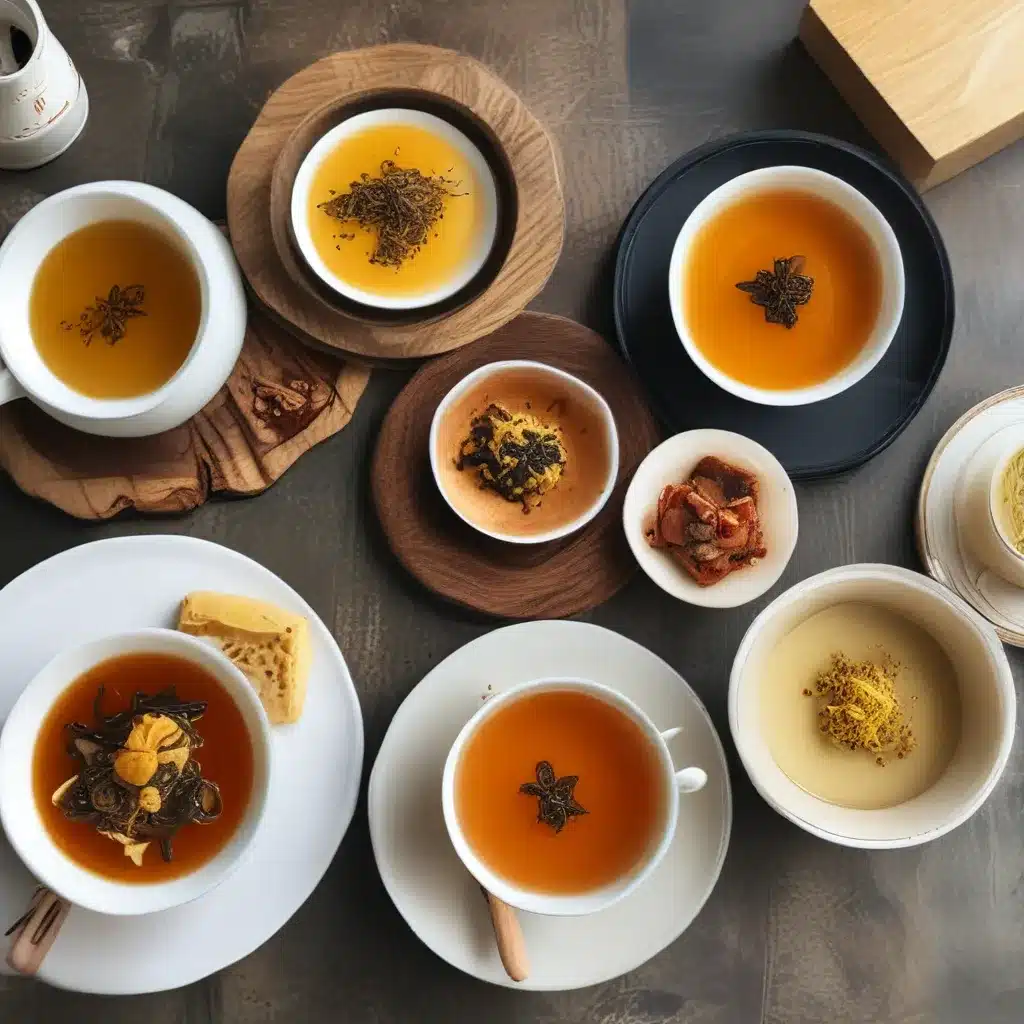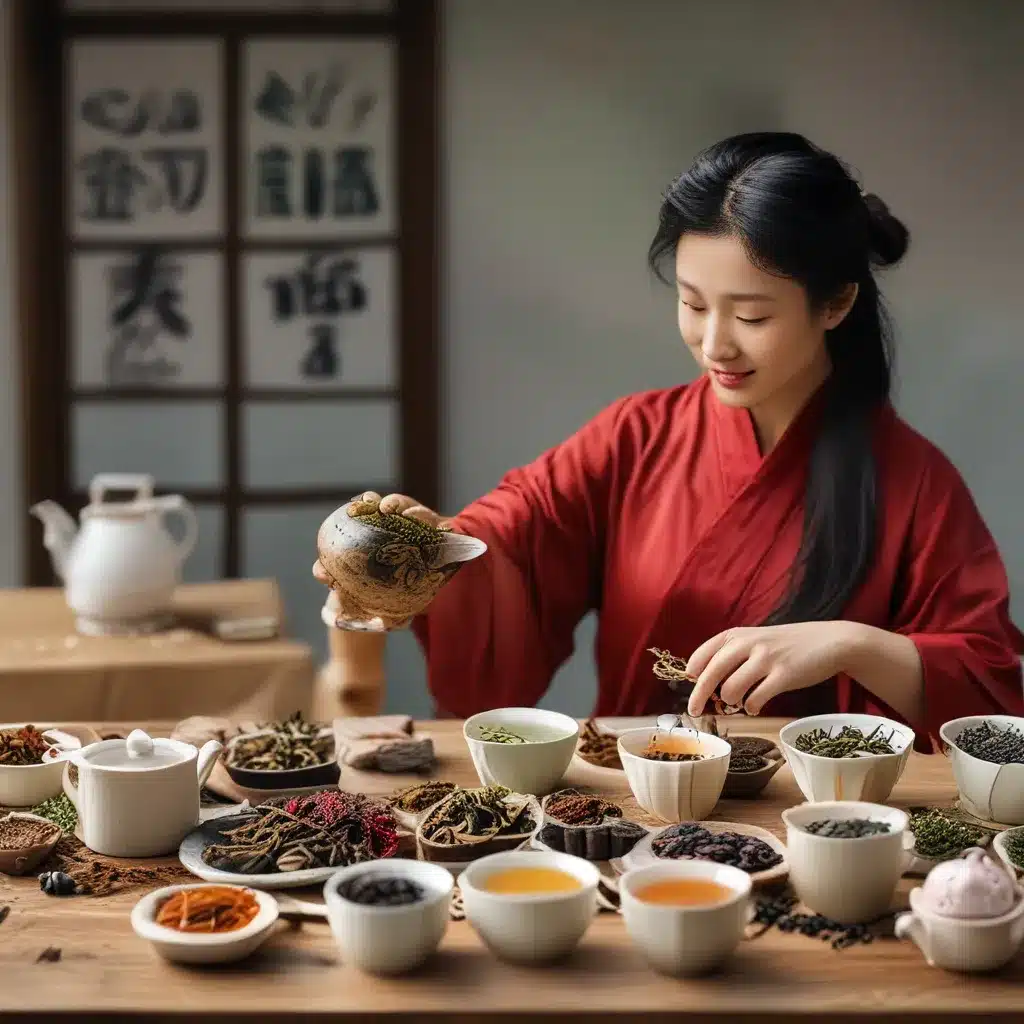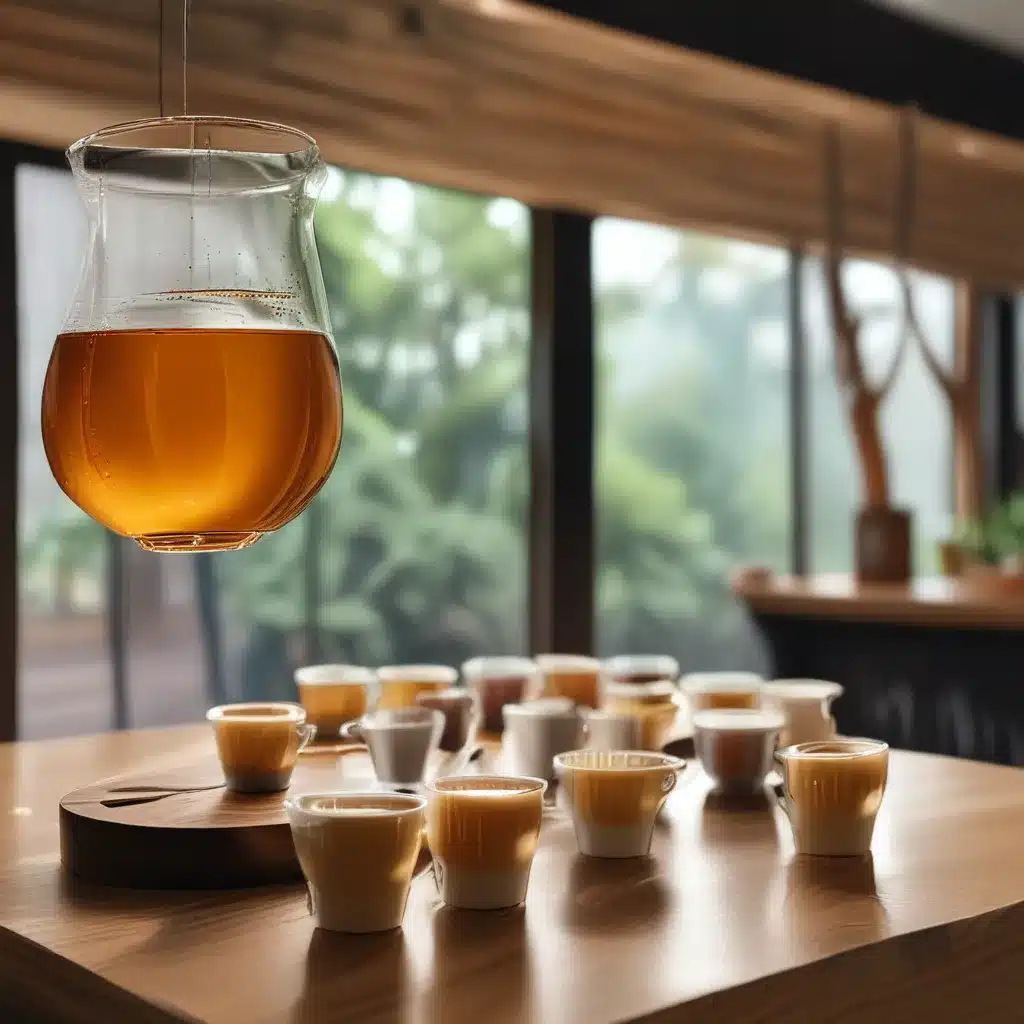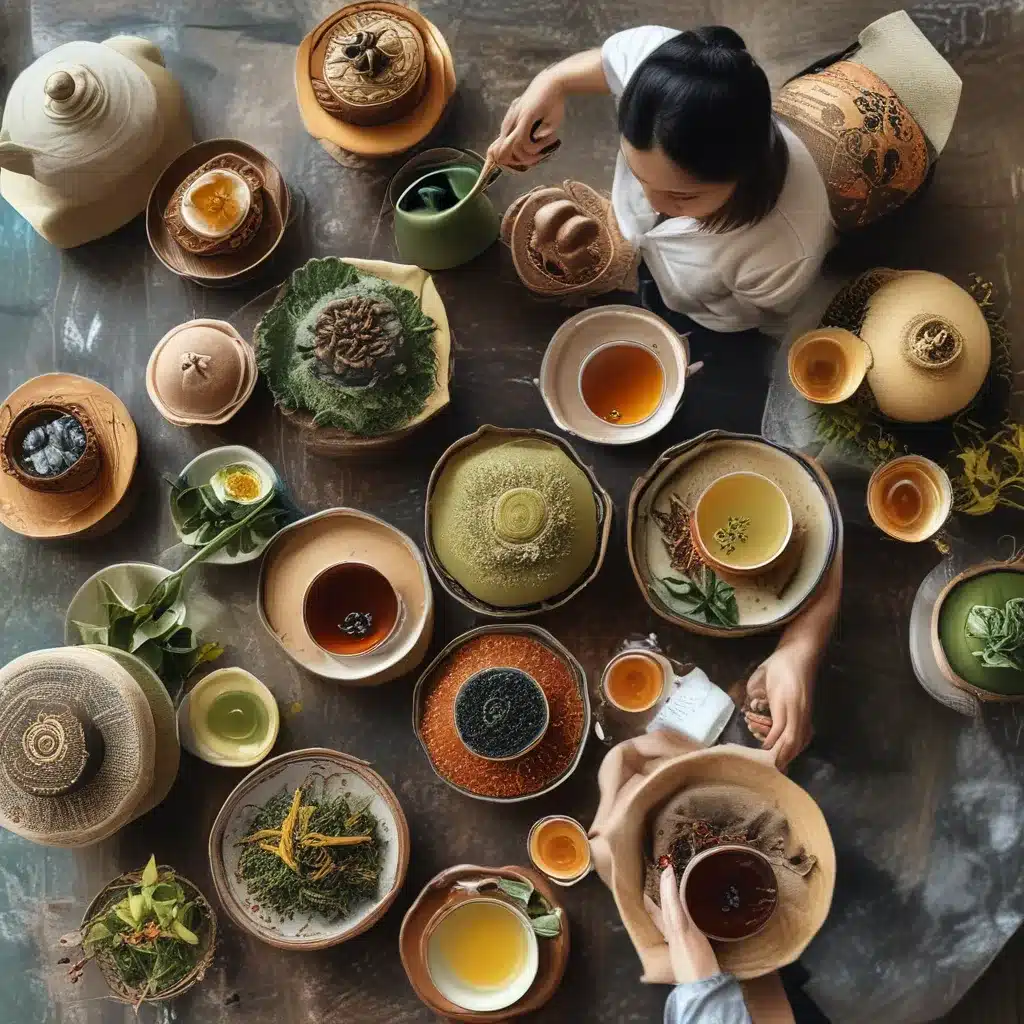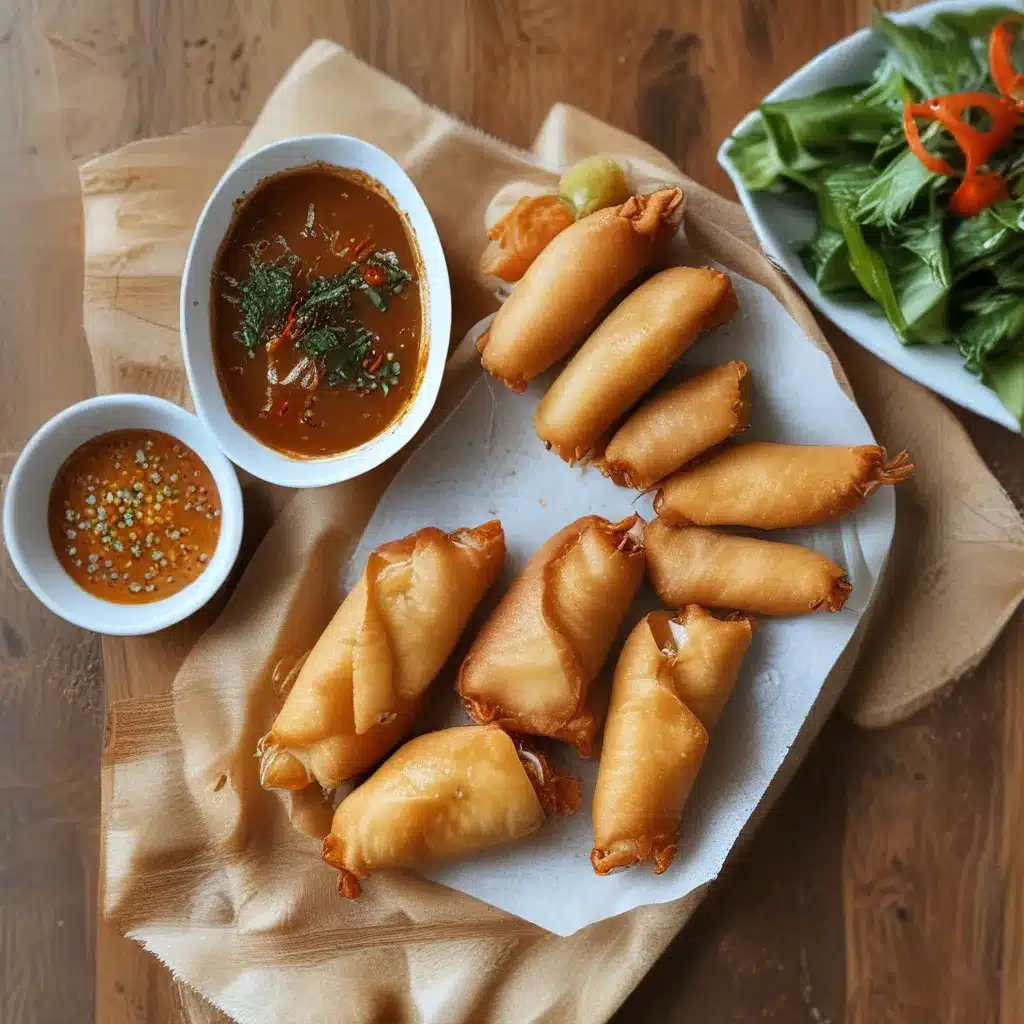
The Allure of Street Food
When I think of Chinese cuisine, one of the first things that comes to mind is the vibrant street food culture. The sizzling woks, the tantalizing aromas, and the bustling energy of crowded night markets – it’s a sensory experience that’s hard to replicate in a traditional restaurant setting. That’s why I’m so excited to share with you my recipe for homemade crispy spring rolls, a beloved Chinese street food that you can now enjoy in the comfort of your own kitchen.
Growing up, I was always fascinated by the street food vendors back in my hometown of Shanghai. Whether it was the old woman grilling skewers of fragrant, juicy meat or the nimble-fingered noodle-makers skillfully pulling and stretching the dough, there was an undeniable charm and authenticity to these casual, open-air eateries. The food wasn’t just delicious – it was a glimpse into the heart and soul of the local culture.
As Cynthia Clampitt notes in her article for Newcity Resto, street food is a way of life in many parts of Asia. In cities where apartment kitchens are small or non-existent, the vibrant street food scene becomes an essential part of daily life. Vendors offer a diverse array of dishes, from skewered meats and noodle soups to steaming buns and crisp, golden spring rolls.
The Art of Spring Roll Perfection
And that’s where our homemade spring rolls come in. These crispy, flavorful parcels are the perfect way to bring the essence of Chinese street food right to your own kitchen. Now, I know what you might be thinking – making spring rolls from scratch sounds like a daunting task. But trust me, with a little guidance, you’ll be wrapping and frying like a pro in no time.
The key to truly great spring rolls lies in the filling.As the team at RecipeTin Eats explains, the classic components are a mix of ground pork, finely chopped vegetables, and aromatic seasonings. I like to add in some earthy, umami-rich mushrooms for an extra boost of flavor. The filling should be well-seasoned and cooked until the flavors meld together perfectly.
But the real magic happens when you wrap those delectable fillings in the spring roll wrappers. These thin, pliable sheets of dough can seem a bit tricky to work with at first, but with a few simple techniques, you’ll be a spring roll wrapping master. The Woks of Life blog has some wonderful advice on how to handle the wrappers, like keeping them moist with a damp towel and rolling them tightly to prevent any leaks.
The Crispy Finale
And of course, no spring roll experience is complete without the final, crunchy step – frying. Now, I know deep-frying can seem daunting, but trust me, it’s worth the effort. The key is to maintain the oil at the perfect temperature, around 350°F (175°C), to ensure the spring rolls come out shatteringly crisp on the outside and juicy on the inside.
At our Shanghai cuisine restaurant, we take great pride in our spring rolls, carefully perfecting each step to deliver an authentic and unforgettable experience. And now, you can do the same right in your own kitchen. So gather your ingredients, channel your inner street food vendor, and let’s get to work on creating a batch of homemade crispy spring rolls that will transport you straight to the heart of Shanghai.
Perfecting the Filling
As I mentioned, the filling is the foundation of a truly great spring roll. It’s where all the flavors come together to create that irresistible balance of savory, sweet, and aromatic goodness. So, let’s dive in and explore the key elements of the perfect spring roll filling.
First and foremost, the protein. Traditionally, ground pork is the go-to choice, but you can certainly experiment with other options like shrimp, chicken, or even tofu for a vegetarian version. The key is to make sure the meat is finely minced or grated, so it blends seamlessly with the other ingredients.
Next up, the vegetables. This is where you can really let your creativity shine. Finely shredded cabbage, julienned carrots, and diced mushrooms are all classic choices, but don’t be afraid to mix it up. Scallions, bean sprouts, and even jicama can add wonderful crunch and flavor to the filling.
And let’s not forget the seasonings. A little soy sauce, sesame oil, and white pepper go a long way in elevating the filling to new heights of deliciousness. You can also experiment with aromatics like garlic, ginger, and even a pinch of five-spice powder for an extra layer of complexity.
The key is to sauté the filling until it’s fragrant and the flavors have had a chance to meld together. As the folks at The Woks of Life suggest, it’s important to let the filling cool and drain off any excess moisture before wrapping, to ensure a crisp, leak-proof final product.
The Art of Wrapping
Now that we’ve mastered the filling, it’s time to tackle the wrapping. This is where the true artistry of spring roll-making comes into play. It may seem daunting at first, but with a little practice, you’ll be rolling up those crisp, golden parcels like a seasoned pro.
The spring roll wrappers themselves are truly a marvel of culinary engineering. These thin, delicate sheets of dough are surprisingly sturdy and pliable, making them a joy to work with. As the team at RecipeTin Eats explains, they come in various sizes, from tiny squares perfect for mini spring rolls to the larger 8-inch squares I prefer for a more substantial bite.
The key to successful wrapping is to keep those wrappers moist and pliable. A damp paper towel or tea towel is your best friend here, gently draping it over the wrappers as you work to prevent them from drying out and cracking. And don’t be afraid to get a little hands-on – a quick scrunching or swirling of the wrapper can help it become more cooperative.
The wrapping technique itself is surprisingly straightforward. Start by placing a wrapper on a clean surface in a diamond shape, then spoon a generous amount of filling onto the lower third of the wrapper. Fold the bottom corner over the filling, tuck in the sides, and then carefully roll the whole thing up into a tight, neat cylinder. It might take a few tries to get the hang of it, but trust me, the satisfaction of crafting the perfect spring roll is worth it.
Frying to Perfection
Alright, now that we’ve mastered the filling and the wrapping, it’s time for the grand finale – frying! This is where the magic really happens, transforming those humble spring roll wrappers into shatteringly crisp, golden-brown masterpieces.
Now, I know deep-frying can seem a bit intimidating, but with the right technique, it’s a breeze. The key is to maintain the oil temperature at a consistent 350°F (175°C). Any hotter and the outside will burn before the inside is cooked through; any cooler and the spring rolls will turn out greasy and soggy.
As the RecipeTin Eats team suggests, the best way to achieve this is to use a deep, heavy-bottomed pot or Dutch oven, and invest in a reliable digital thermometer to keep a close eye on the oil temperature. And don’t be afraid to adjust the heat as needed to keep things at the perfect sizzling sweet spot.
Once the oil is ready, gently lower those neatly wrapped spring rolls into the hot bath, being careful not to overcrowd the pan. Let them fry for 2-3 minutes, flipping occasionally, until they’re a gorgeous golden-brown all over. Resist the urge to poke or prod them too much – you want to give those wrappers a chance to transform into the crisp, flaky delicacy they’re meant to be.
And the best part? Those luscious, juicy fillings are the perfect complement to the shatteringly crisp exterior. One bite, and you’ll be transported straight to the heart of a bustling Chinese night market, the sights and sounds and, most importantly, the flavors, all coming together in perfect harmony.
Serving and Dipping
Alright, now that we’ve conquered the art of spring roll perfection, it’s time to talk about the finishing touches. Because let’s be honest, a great spring roll is only as good as the dipping sauce that accompanies it.
In my opinion, the classic sweet and sour sauce is the way to go. It’s the perfect foil to the savory, umami-rich filling, adding a bright, tangy punch that really makes the flavors pop. And the best part? It’s shockingly easy to make at home.
All you need is a few simple ingredients – rice vinegar, soy sauce, a touch of sugar, and a pinch of chili flakes for a little heat. Whisk it all together, and you’ve got a dipping sauce that will have your guests raving.
But don’t stop there! Get creative with your accompaniments. A vibrant array of fresh herbs, like cilantro, mint, and Thai basil, can add a lovely aromatic contrast. And a sprinkle of toasted sesame seeds or crushed peanuts can lend a delightful crunch.
And of course, don’t forget the presentation. Arrange your freshly fried spring rolls on a platter, garnished with the dipping sauce and any other goodies you’ve chosen to include. It’s a feast for the senses that’s sure to impress.
So gather your friends and family, pour a round of refreshing Chinese-inspired cocktails, and let’s dive into this delicious homemade spring roll experience. After all, what better way to enjoy a taste of authentic Shanghai cuisine than with these crispy, flavorful parcels of pure joy?

